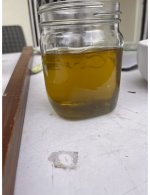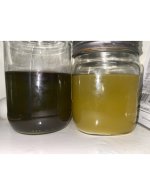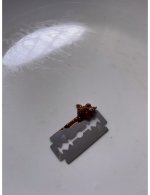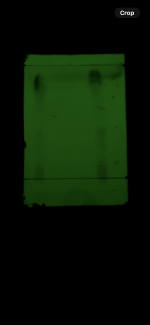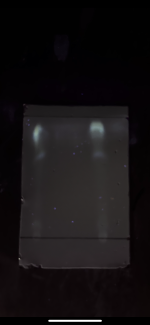Woolmer
Esteemed member
I performed a CIELO-type extraction on 43 g of Sceletium tortuousm with 80 ml water and 13 g CaOH. It was a bit too much water as a tiny amount of water came out in the first pull when I squeezed it with the coffee plunger. The water did not seem to pass through the coffee filter though.
I dumped the citric acid without any stirring and it resulted in a very thick goo. Unfortunately, there was plastic that came loose from the lid of my jar and some probably dissolved into the ethyl acetate. I had to redissolve the product back in water and try to filter the plastic out.
Yield 1.37% mesembrine (and related alkaloids) citrate
I tried to make the benzoate salt by doing a mini A/B with NaOH but struggled to redissolve the freebase back into ethyl acetate or acetone. The bit that did dissolve I salted with by dropping the benzoic acid directly and it made a less waxy but still not crystalline product.
I might try to dissolve some in pg/vg to vape it, though I am a bit wary of the plastic from the lid.
The second picture below is next to a mescaline extraction that I was doing at the same time, right after having added the citric acid. The last picture is the citrate salt.
I dumped the citric acid without any stirring and it resulted in a very thick goo. Unfortunately, there was plastic that came loose from the lid of my jar and some probably dissolved into the ethyl acetate. I had to redissolve the product back in water and try to filter the plastic out.
Yield 1.37% mesembrine (and related alkaloids) citrate
I tried to make the benzoate salt by doing a mini A/B with NaOH but struggled to redissolve the freebase back into ethyl acetate or acetone. The bit that did dissolve I salted with by dropping the benzoic acid directly and it made a less waxy but still not crystalline product.
I might try to dissolve some in pg/vg to vape it, though I am a bit wary of the plastic from the lid.
The second picture below is next to a mescaline extraction that I was doing at the same time, right after having added the citric acid. The last picture is the citrate salt.
Attachments
Last edited:

